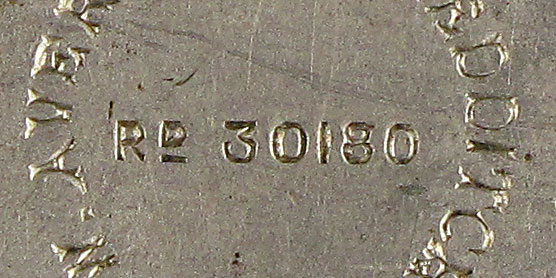Registration Marks on Avery Needle Cases
One way to authenticate an Avery needle case is to check to see if it has a patent reference or a registration mark. During the Victorian Period, when these needle cases were manufactured, most inventions were registered with the UK Patent Office in order to provide copyright protection for the design. Most non-figural style needle cases were registered using a mechanical patent process while the majority of figural needle cases were registered through an ornamental design process. Whereas non-figural needle cases usually contain the word “Patent”, nearly all figural style Avery needle cases have a diamond shaped registration mark stamped on the bottom of the item. When the figural design was registered, the Patent Office assigned a unique mark to each design to indicate the item was designed in the UK. What makes these marks so important today is they contain codes to indicate the date the item was registered. Once the codes are deciphered, registration information can be reviewed and the needle case in question can be compared to the design drawing or description in the original registration documents.
Part of the research for this website included locating and examining the patents or design registrations for all Avery style needle cases. This was done to determine who the owners of the designs were and to ascertain when the designs were created in order to understand and explain the history of Avery needle cases. These are the only detailed records that exist relating to when these needle cases were produced and who created them. It seems most likely that the designs were registered shortly before they were actually manufactured. At first a list was prepared based on the patent or design registration numbers and dates enumerated in Horowitz and Mann’s book “Victorian Brass Needlecases” which was published in 1990. Using this list as a starting point research was then done online since many of these historical records were digitized in the last few years. All UK patents for the period 1617-1899 are accessible at the British Library’s Business and Intellectual Property Centre in London whereas design registration information from 1839-1991 is available at The National Archives (TNA) in Kew. Additional online and in person research at these two facilities was undertaken between 2011 and 2015. A brief review of these processes will help collectors better understand what historical information is available. Keep in mind however, that not all designs were registered and some registered designs may be missing from these collections.
Mechanical Patents
Mechanical patents were issued by sequential number within a year and each patent was formally documented and bound in patent books at the end of the year. For example, patent 1868-8 was the eighth mechanical patent issued in 1868 and was registered by Henry Milward & Sons on January 1st, 1868. It covers all Fan style needle cases with chromolithographic interior panels and consists of a drawing and five pages of typed text. William Avery’s third patent, 1868-3517, was the three thousand five hundred and seventeenth mechanical patent issued in 1868 and was registered by Mr. Avery and Albert Fenton on November 19th, 1868. A copy of this patent, along with a US version recorded in 1870, can be found on Patents section of this website. The UK patent covers all Quadruple and Lever style needle cases and contains a drawing and six pages of typed descriptive text. The word “Patent” and the number “3517”, as seen in the photograph here, are occasionally found on the actual needle case which makes it easy to match an item to a design. Although the word “Patent” is found on most non-figural needle cases, the patent number is frequently missing. Unfortunately, without the patent number it is more difficult to locate the actual patent information at the British Library.
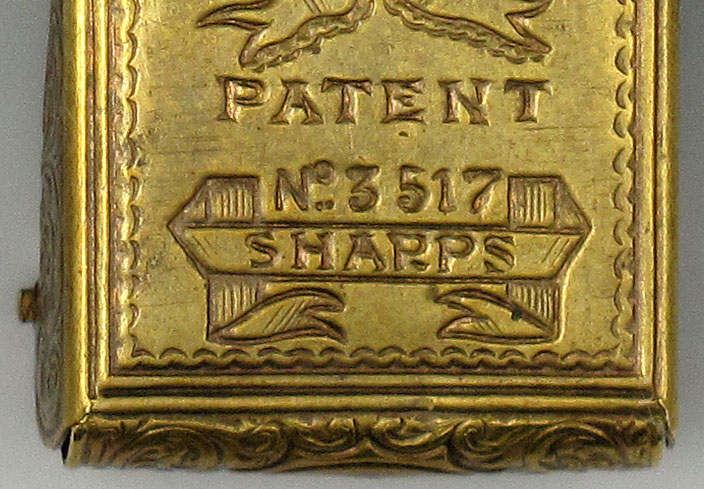
So how does one go about finding the patent number if it is not stamped on the needle case? Fortunately, shortly after a year ended, books were produced such as “Chronological and Descriptive Index of Patents Applied For and Patents Granted, Containing the Abridgements of Provisional and Completed Specifications for the Year 1872, with Indexes of Names and Subject-matter” , published in 1873. Years later additional patent books were issued such as “Subject-Matter Index of Patents Applied for and Patents Granted for the Year 1853”, published in 1861 or “Patents for Inventions - Abridgement of Specifications Class 112, Sewing and Embroidering, Period A.D. 1867-1876” which was printed in 1904. Page iv of this last book contains a subject matter index for needle cases. Some of these books are available online at Google Books and can be searched in a variety of ways and all are available at the British Library in London. Hours were spent going through many of these books either at Google Books or at the library covering the period from 1860 until around 1900 in order to locate the patents for many Avery style needle cases. Unfortunately, it is possible that a few might have been missed as there were so many pages of patent listings to search through. Once the patent number is identified, a request for a PDF copy of the patent can be made at the British Library reference desk and it can either be printed, emailed to you or viewed online at the library. As of May 2015, access to the online copy is only available on-site at the library. For those individuals seeking more information regarding early British patents, research guides are available at http://www.bl.uk/help/find-early-british-patents.
Ornamental Designs
Ornamental or decorative design registrations underwent an entirely different process. For each registration, there were two original documents: a design register and a design representation. Copies of these can be found on the Master List webpage for each individual needle case. The design register was recorded manually in one book and the design representation in another. The register was similar to an account book with each registration entered on a separate line with about 20-30 items per page. For each item the register included the registration number, registration date, name and address of the owner of the design, the material classification of the item and often, but not always, the design subject (e.g.: needle case, receptacle for needles, pin case, etc.). In contrast, the design representation consisted of a sketch, detailed drawing or photograph of the design with the registration number which was pasted into another book with several other designs per page, frequently arranged in a haphazard manner. Occasionally the owner of the design was also listed next to the illustration with the design’s subject as well as the date the design was registered. Many of these design representations were simple sketches with little detail of what the actual item would look like. All of these original documents, bound in oversized books each with a unique reference number, are stored in the archives at TNA (The National Archives). Individual records can only be accessed if the design registration number and the reference book number are known. There are literally hundreds of oversize books in storage at TNA.
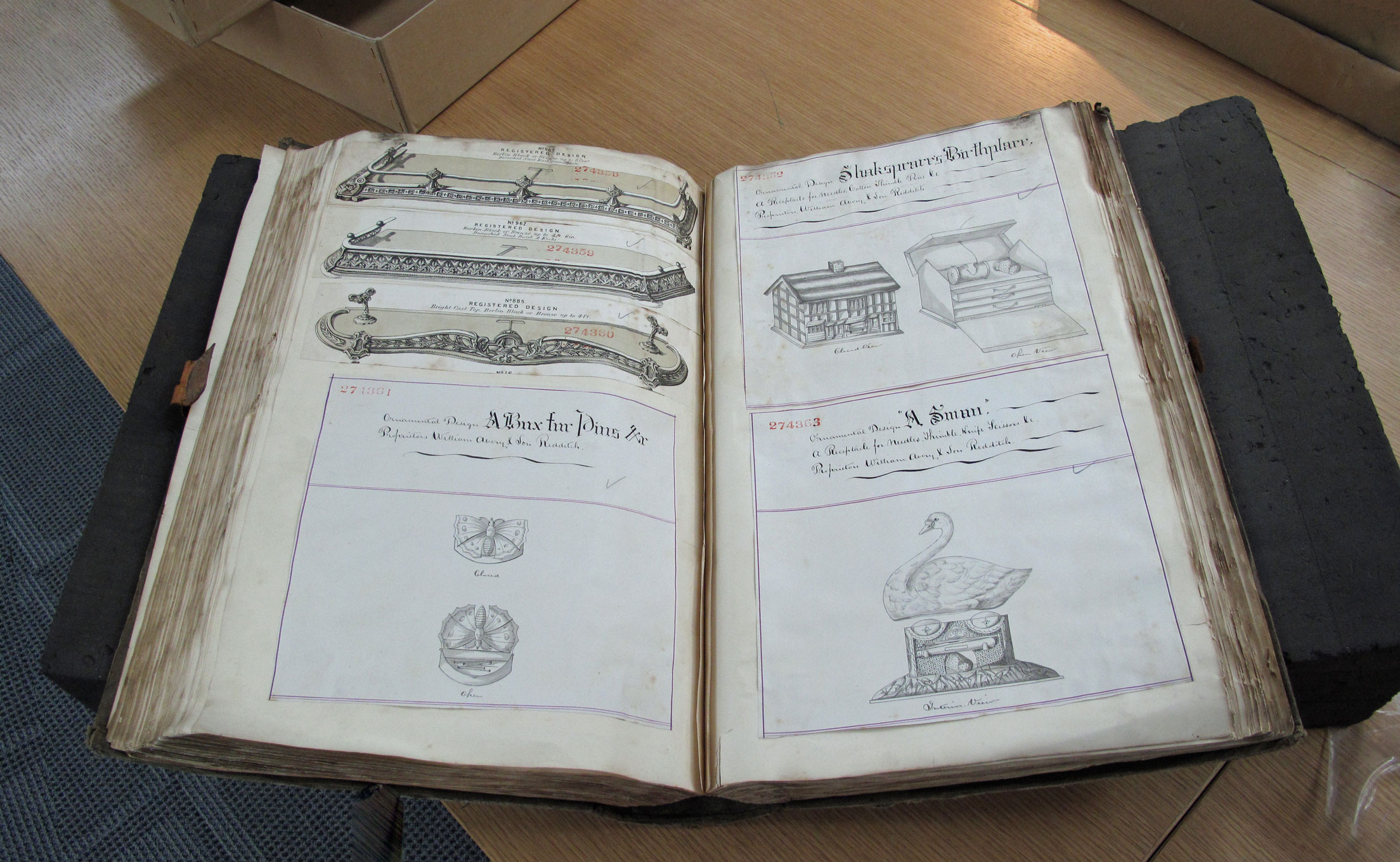
Currently only the design registers from 1842-1884 have been digitized by TNA but these can be searched in a variety of ways. One way to ascertain the registration number is by carefully reviewing the diamond registration mark on the actual needle case and deciphering the code to determine the date the item was registered. Once the date is known, then a search of the online register can be performed and all registrations recorded on that date under a specific classification can be reviewed to determine if any have a subject related to needle cases. The online register displays the registration information including the number, however in order to view the actual design illustration one has to visit TNA to look at the original reference books. Another option to help locate the registration number is to search the digitized database filtering by various proprietor names and/or subjects (e.g.: needle, pin, etc.). Throughout this time period design registrations were filed according to their “material classification” with all Avery style needle cases falling into the classification for metal. A thorough search through these online databases was undertaken which included not only searching for the design registration numbers, but also determining which TNA reference books the original records were located in. In addition, the online register was filtered by all company names that were identified as having at least one needle case design and also by subject to ensure that all potential needle or pin cases were found. Once the registration numbers and reference books were identified, the actual design illustrations had to be obtained by hiring a researcher in London to photograph the original records at TNA. This process was quite tedious and problematic because some registers did not list a subject which meant many representations were investigated only to discover they were not needle cases. During this information gathering process it was discovered that some of the registration numbers in Horowitz and Mann’s book contained typographical errors. Through this process approximately a dozen needle case designs that had not been identified in the past were discovered. An updated Master List with registration details is available at the Master List web page.
Diamond Registration Marks
A quick review of the diamond shaped registration mark stamped on the surface of most figural needle cases will provide collectors with a way to decipher these codes themselves. Please note there were several other registration marks during the Victorian period and the focus here is on the ones used from 1868-1883 which covers the period when most Avery needle cases were produced. Each mark is composed of four parts as shown in drawing below. The top of the diamond is split into an upper circle and lower section. The upper circle includes the code for the material the item was made from. For Avery needle cases this is always the Roman numeral “I”, the code for metal. The lower part of the top of the diamond contains a number which represents the day the item was registered. The right point of the diamond contains a letter code which indicates the year the design was registered, while the bottom of the diamond contains a letter code for the month. For purposes of translating these codes into a date, the left point of the diamond is unnecessary as it indicates the number of bundles registered on that date. The letter codes are translated in the charts below.
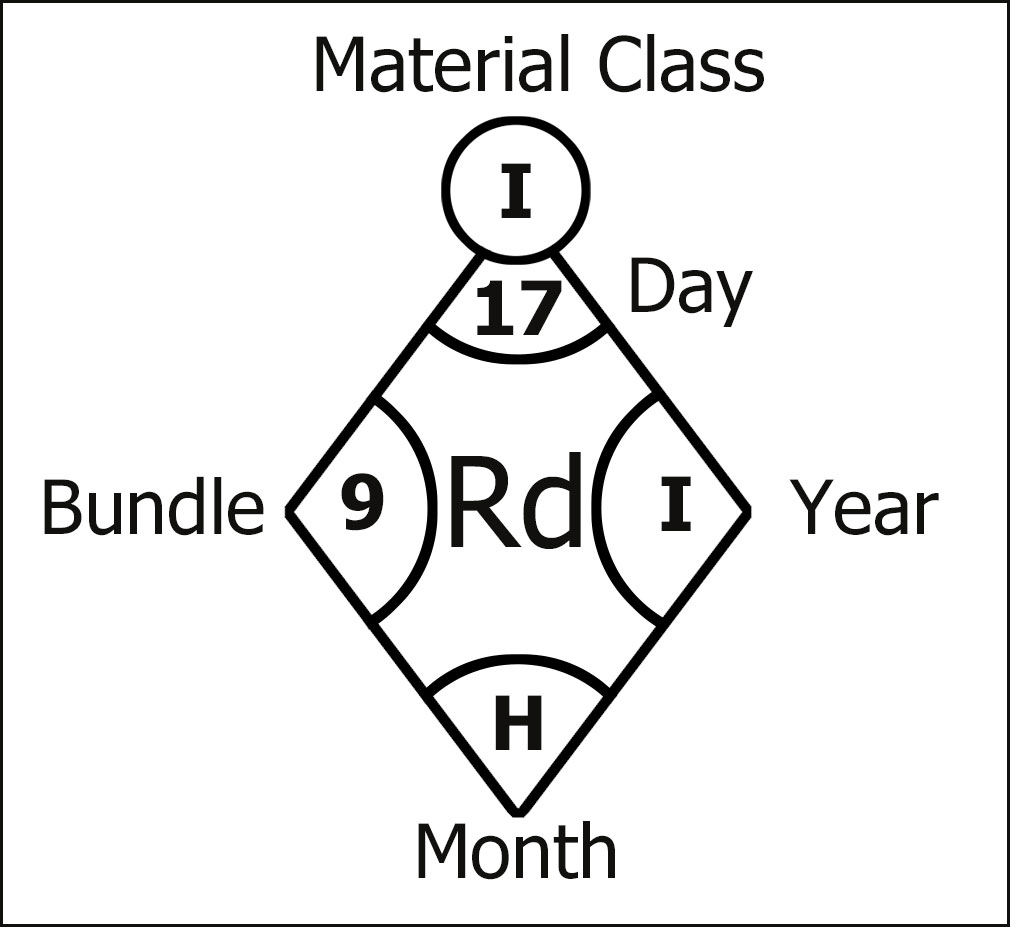
Month Code Month
A December
B October
C January
D September
E May
G* February
H April
I July
K November
M June
R August
W* March
*from March 1-6, 1878 G was used instead of W
Year Code Year
A 1871
C 1870
D* 1878
E 1881
F 1873
H 1869
I 1872
J 1880
K 1883
L 1882
P 1877
S 1875
U 1874
V 1876
W* 1878
X 1868
Y 1879
*from March 1-6, 1878, W was used in place of D
Examples
For example, the needle case seen here on the left, has the diamond mark pictured on the right stamped on the bottom. The translation of the diamond mark indicates the item was registered on June 27, 1872 (I = 1872 and M = June). When this date is searched on the TNA website’s register database we find 12 metal items registered on that date. Six are needle cases registered to W. Avery & Son, but only the one with registration number #263784 contains the description “Hedgehog Needle and Pin case”. The next step is to locate the registration image from one of the original books only available at the TNA reference desk. In this example the representation is the drawing below. As you can see the actual needle case and the original drawing, which was registered when the item was designed, match. The original register for this item is located in TNA reference book BT44/2/263784 and the representation is in book BT43/32/263784.
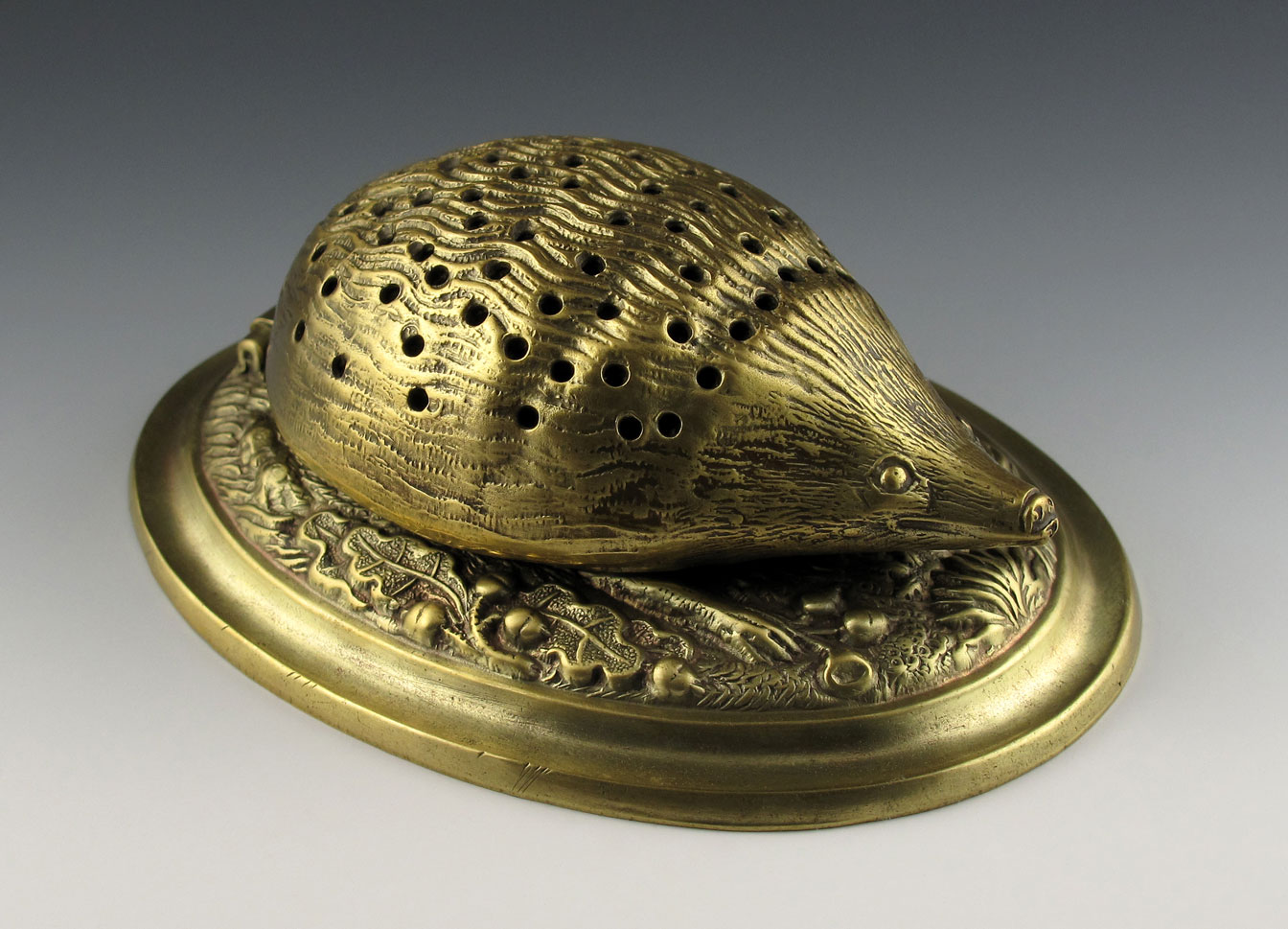
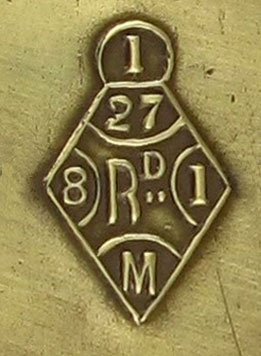
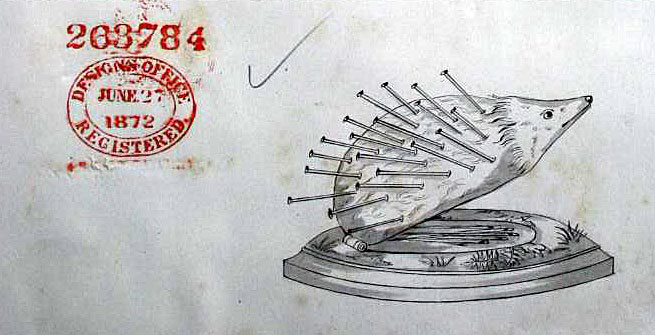
Although the process for locating these documents may sound quite simple, it is in fact extremely time consuming and complicated for two reasons. Frequently the diamond registration mark on the actual needle case is worn and can be difficult or even impossible to read. For example, on the diamond mark seen here, the year code appears to be a “D” when in fact it is an “I” that has become scuffed after years of use. This means the search for records dated April 17, 1878 will result in nothing since the date that should be searched is April 17, 1872. Often several years, days or months need to be searched in order to find the correct documents. Secondly, most of this research can only be done on-site at TNA. On the other hand, it is much easier to do this research today than it was when Horowitz and Mann did their research in the 1980’s.
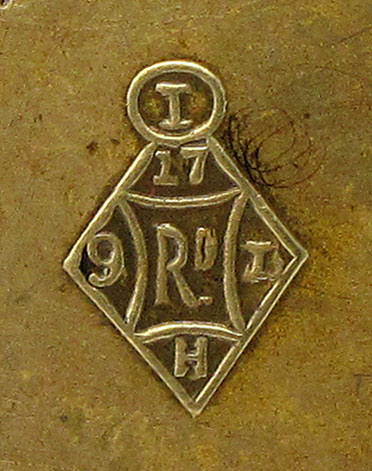
At TNA there are many more records available to researchers than the ones described above for ornamental or decorative designs. Considering there were 33 known Avery style needle cases whose patent or ornamental design registration documents were not found after the research discussed above, additional examination of these other resources was n ecessary. Whereas the registers for ornamental designs from the time period 1842-1884 are digitized, registers outside that date range and other indexes were not, meaning they had to be searched manually on-site. Fortunately, ornamental designs registered after 1883 no longer were given a unique diamond registration mark. Instead they were assigned the letters Rd followed by the registration number making it very easy to locate the registration documents because the actual needle case had that number stamped on it as seen in the photograph below. Many other documents were researched at TNA in an attempt to locate the design registrations for all metal needle cases produced between 1867 and 1899. This research included searching through many subject and proprietor indexes. More information about how the research was done can be found at this web page. Subjects related to needle cases and the names of the main companies who registered other designs were investigated. As a result, several hundred items were studied in detail although only 13 additional registrations for Avery style needle cases were found.
